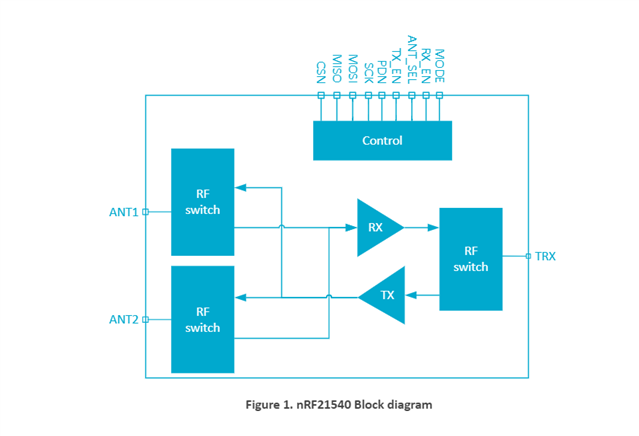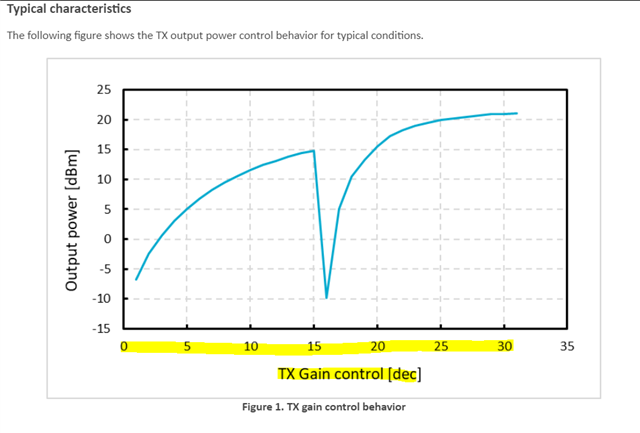Hi,
We are working with nRF21540DK and developing a BLE application. nRF21540DK with nRF Connect SDK 2.5.0 . I have couple of questions.
- In nRF21540DB product page says "The two antenna ports on the nRF21540 DK are useful for antenna diversity scenarios in 802.15.4 based protocols (i.e. Thread or Zigbee) to reduce multipath propagation effects.". I couldn't see any explanation on the datasheet regarding two antenna and BLE.
Does BLE protocol use the both antennas? - If BLE doesn't use both antennas, which antenna it use, POUTA or POUTB?
- POUTA set to 20dB and POUTB set to 10dB as default. Is there any reason you have selected these values as default? For example why it is not 21db which is the maximum value.
- Why you haven't selected 20dB for both antenna? Why the POUTB is exactly the half value of the POUTA ?
- In datasheet page 25, CONFREG0 TX_GAIN TX gain control (0: minimum, 31: maximum). What is the unit of this value, obviously it is not dB, because maximum is 21dB.
- What is the minimum and maximum dB value we can set for POUTA and POUTAB individually?
Thanks.






